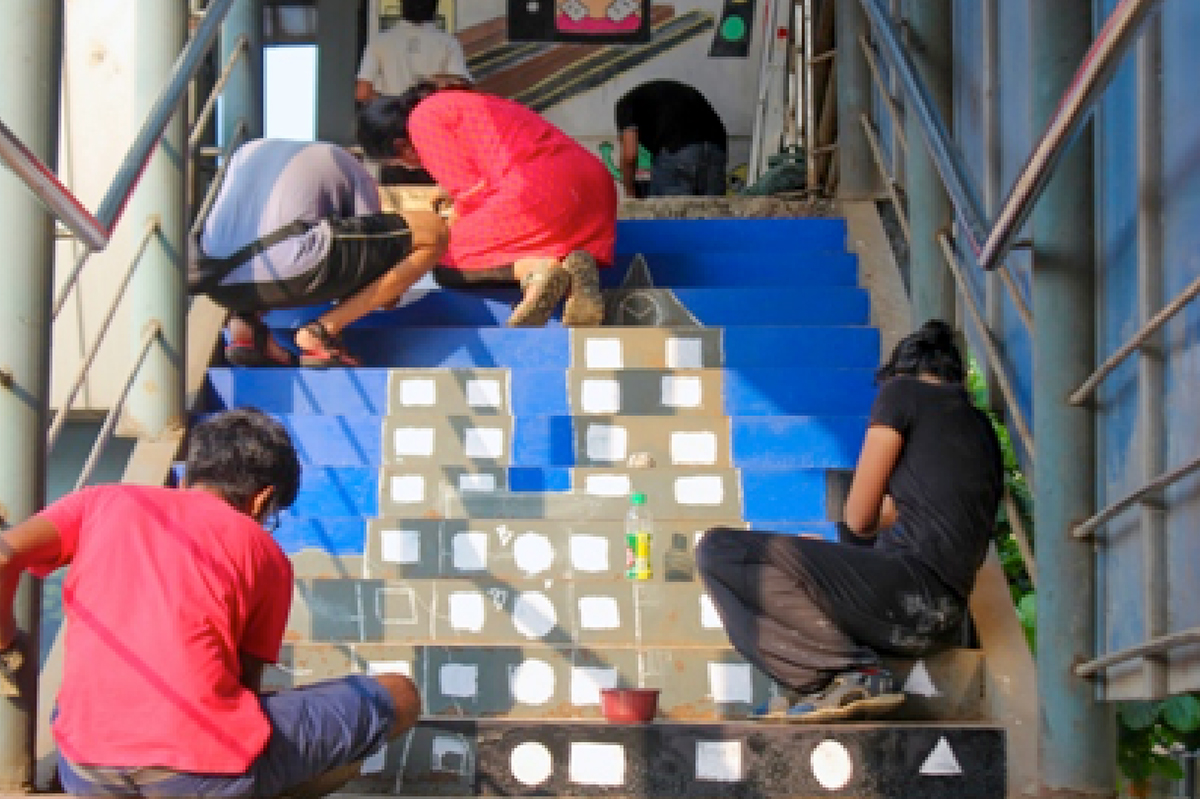Name: Saloni Mehta
Guide: Prof. Venkatesh Rajamanickam
Course: Interaction
Credits: Udbhav Jain for the animation, Mr. Jogdand from the BMC for support, DIC for the funding, All the volunteers for the volunteering
Nudging Pedestrians to Use Foot Over Bridges
Traffic accidents involving pedestrians have become a major problem across regions with high population density and rapid urbanization. To deal with the increasing number of pedestrian–vehicle conflict points, many foot-over-bridges (FoBs) have been constructed. However, instead of using the available FoBs, jaywalking (crossing busy roads, ignoring running vehicles) is a common phenomenon.
In this project, we influence behaviour by studying and understanding the current behaviour patterns and then use social influence as a behaviour nudge. Using the junction opposite IIT Bombay’s main gate as the site for intervention and by means of a community spotfix event, an attempt is made to persuade pedestrians to not jaywalk, without being paternalistic or introducing rules and policies.
Goals & Scope
In this project, we look to influence pedestrian behaviour by nudging to increase use of FoBs.
This has been studied by interventions designed in and around the FoB opposite IIT Bombay’s main gate.
Key Question
Does social influence and community participation lead to increased participation and usage?
“Current Scenario
This is the scene outside the campus main gate at about 6:30 in the evening. It is a Sunday, so it is a particularly non-crowded day. The junction has no assigned pedestrian crossing time, multiple arterial roads open up at the same time, and it is very chaotic.
What most of these people seem to have forgotten, or ignored, is the presence of a foot over bridge here. Just like all the other foot over bridges across the country, this bridge is hardly ever used …
… and rightly so. The entryways are blocked and hard to access, and the bridge itself dark and dingy.”
“Understanding the Irrational Pedestrian
via observations, studies, behaviour theories, news and interviews”
“Causing Behaviour Change
Using BJ Fogg’s Behavior Model we understand that to make any behavioural change happen, we must have adequate motivation, ability and the correctly placed and timed triggers.
Keeping this thought as a base, the current situation was analysed and steps were taken to make the scenario such that triggers would have maximum effect.
Step 1: Use social influence as a behavioural nudge to move beyond the action line. This was done via a community-volunteering event to clean up the bridge.
Step 2: Add rightly placed and timed triggers. This was done via posters, signages in additional to the visually appealing stairways.
All details here: https://www.behance.net/gallery/52202349/Nudging-Pedestrians-to-Use-FoBs-at-Junctions”
















